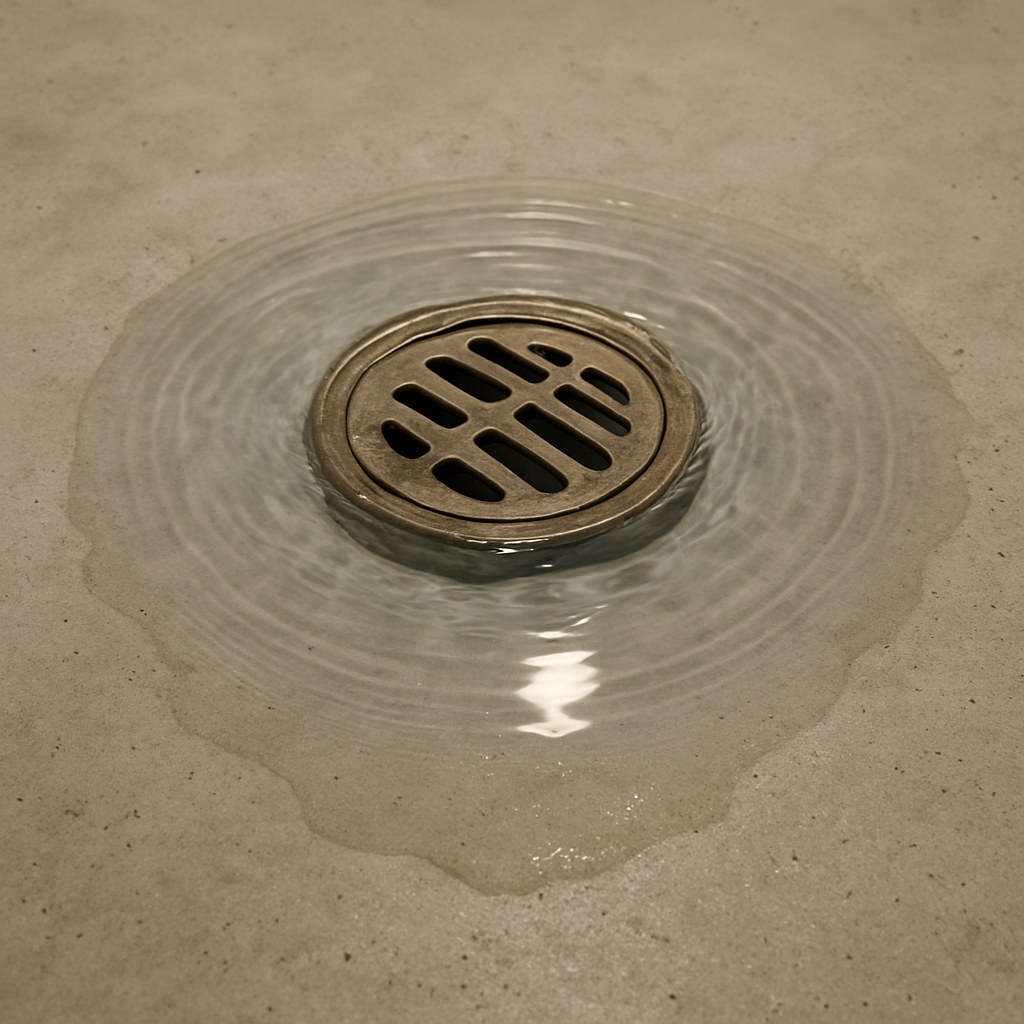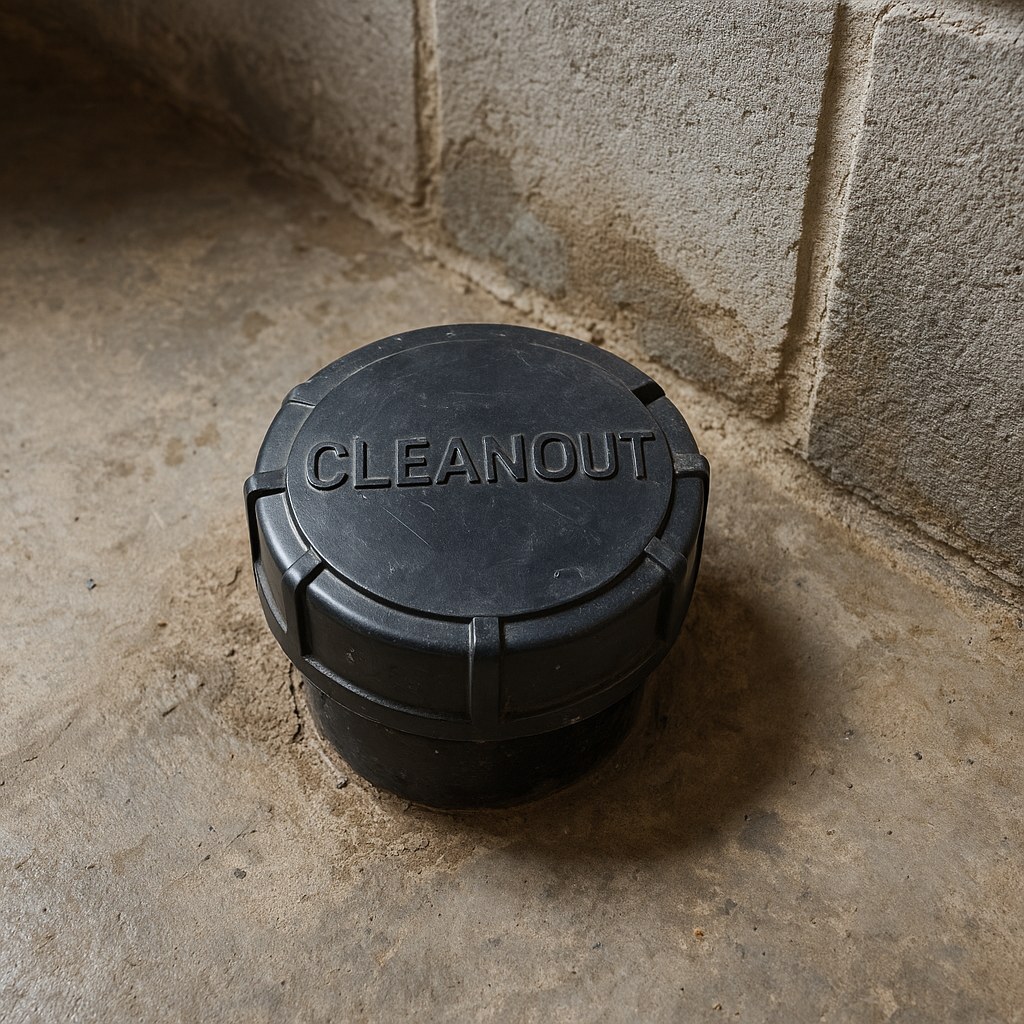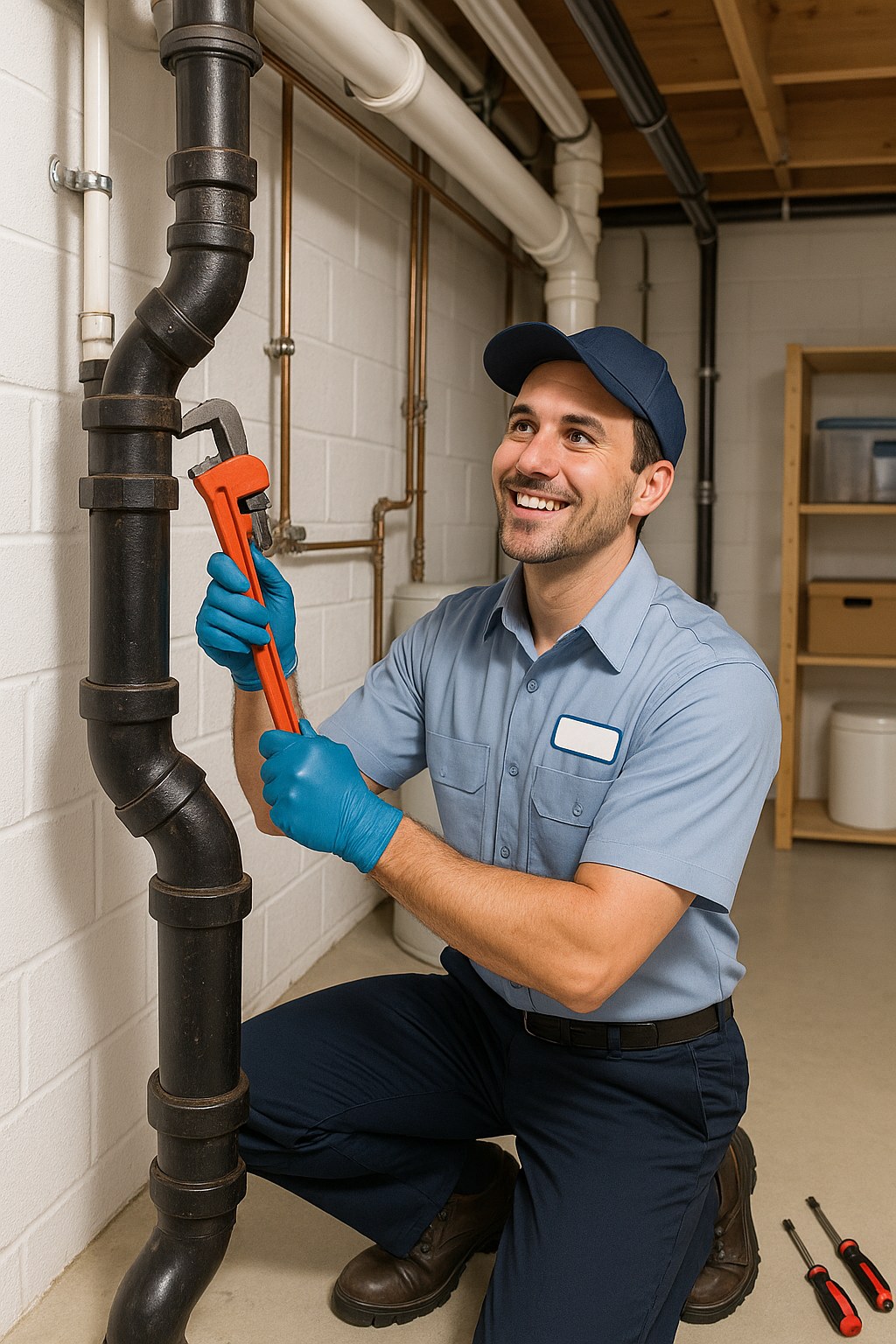How to Fix Water Backflowing From Your Floor Drain A Step by Step Guide
There are few home maintenance surprises more unpleasant than discovering a puddle of murky water creeping out from your floor drain. Whether it’s in your basement, laundry room, or garage, water backflow is a problem you need to address immediately. It’s not just messy—depending on the source, it can be a serious health hazard and cause significant water damage to your home.
But don’t panic! I’m here to walk you through it, just like I would over the phone. Many causes of water backflow can be diagnosed and even fixed without calling a professional.
This guide will help you identify the source of the problem, take the right safety precautions, and follow a clear, step-by-step process to get your drains flowing in the right direction again.

Why Is Water Backing Up My Drain?
Before we roll up our sleeves, let’s understand what’s happening. A floor drain is designed to be an exit point for water, but when it becomes an entry point, something is wrong with your drainage system. Here are the most common culprits:
- A Local Clog: The blockage is right in the floor drain itself or the pipe immediately connected to it. This is often caused by hair, lint, soap scum, or other debris.
- A Main Sewer Line Blockage: This is a more serious issue. If your home's main sewer line is clogged, wastewater from all your fixtures (toilets, sinks, showers) has nowhere to go and backs up through the lowest point—usually the basement floor drain.
- Heavy Rainfall: Intense storms can overwhelm municipal sewer systems, causing a mixture of rainwater and sewage to back up into homes, especially those without a backflow prevention valve.
- A Dry P-Trap: The U-shaped pipe under your drain (the P-trap) is supposed to hold water to block sewer gases. If this water evaporates from lack of use, it can sometimes contribute to drainage issues.
- Blocked Vent Stack: The plumbing vents on your roof can get clogged with leaves or nests, creating negative pressure in the drain lines that hinders proper drainage.
Now, let's figure out which one of these is causing your headache.
Step 1: Safety First! Assess the Situation
Before you touch anything, we need to make sure the area is safe. Backed-up water can be contaminated with bacteria (if it's sewage) or pose an electrical shock risk.
- Protect Yourself: Put on a pair of heavy-duty disposable gloves and non-slip rubber boots. You don't want to come into direct contact with the water.
- Ventilate the Area: Open any nearby windows or turn on an exhaust fan to air out the space, especially if you notice a foul odor.
- Check for Electrical Hazards: This is critical. Look carefully for any electrical outlets, power strips, or appliances in or near the water. If you see any, go to your home’s electrical panel (usually in the basement, garage, or a closet) and shut off the circuit breakers that power that area. Water and electricity are a deadly combination.
Once the area is secure, you can move on to diagnosis.
Step 2: Identify the Water—Is It Sewage?
The type of water backing up gives us our biggest clue.
Using a flashlight, look closely at the water. Is it relatively clear, like dishwater or laundry water? Or is it dark, murky, and contains solids? Now, carefully lean in (about 6 inches away) and take a sniff. Does it have a distinct sewage-like odor?
- If the water looks and smells like sewage: This strongly suggests the problem is in your main sewer line. Proceed to Step 3.
- If the water is clear or grayish and doesn't smell like sewage: The problem is likely more localized or related to rainwater. Skip to Step 4.
Step 3: What to Do for Sewage Backflow
If you suspect a main line blockage, the next step is to confirm it by checking your other plumbing fixtures.
- Run a quick test: Flush the nearest toilet, run the sink for 30 seconds, and turn on the shower briefly.
- Observe: Does the toilet water rise unusually high? Does the sink or shower drain slowly or not at all? Does running water in one fixture cause more water to come up the floor drain?
If other fixtures are also backing up, it's almost certain you have a main sewer line clog.
Your next mission is to find the sewer cleanout. This is a capped pipe that provides direct access to your main line. Look for it in your basement near the foundation wall or outside your house at ground level.

Once you find it:
- Prepare for a spill: Place a large bucket underneath the cleanout cap.
- Open with caution: Using a pipe wrench, turn the cap slowly. Listen for any sound of pressure or flow.
This is a critical moment. If water or sewage begins to flow out under pressure as you loosen the cap, tighten it immediately and stop what you are doing. This means the blockage is downstream from your house, likely in the municipal line or the pipe connecting to it. According to the U.S. Environmental Protection Agency, sewer line backups affect millions of properties each year. At this point, your only move is to call a licensed plumber.
If no water flows out, the blockage is between the cleanout and your house. You can attempt to clear it yourself with a drain auger (also called a drain snake).
- Feed the auger into the cleanout opening until you feel resistance.
- Crank the handle clockwise to break through the clog.
- Pull the auger out, cleaning off any debris into a trash bag.
Afterward, test the floor drain. If it drains normally, you’ve solved it! If not, the blockage is too severe or too far down the line for a standard auger. It's time to call a plumber.
Step 4: Troubleshooting Clear Water Backflow
If the water is clear and other fixtures are draining fine, your job is a lot easier. Let’s explore the possibilities.
Scenario A: It Has Rained Heavily Recently
Heavy rain can overwhelm city sewer systems, forcing water back into your home. Your first line of defense is a backflow preventer—a valve on your main drain line that allows water to flow out but not in.
- Inspect the Backflow Preventer: Locate the valve near your floor drain or on the main sewer pipe. It will have a small, capped fitting on it.
- Check the Flapper: Unscrew the access cap and lift out the flapper valve inside. Is it stuck open or blocked by debris?
- Clean and Reset: If it's obstructed, rinse the valve and wipe the inside of the housing clean. Re-install it, making sure it moves freely. Pour a bucket of water down the floor drain to test it. If it still backflows, the valve may need replacing, which is a job for a plumber.
Scenario B: It Hasn't Rained, and the Drain is a Local Clog
If only the floor drain is backing up and rain isn’t a factor, you’re likely dealing with a simple clog right in the drain itself.
- Remove the Drain Cover: Use a screwdriver to pry off the grate.
- Look for Debris: Shine a flashlight inside. You’ll often find a lovely collection of hair, lint, and gunk. Use a bent coat hanger or pliers to pull out anything you can reach.
- Snake the Drain: For deeper clogs, insert a small drain auger. Crank it clockwise until you feel the resistance ease up.
- Flush it Out: Pour a bucket of hot (not boiling) water slowly down the drain to flush out any remaining debris.
If the water now drains away freely, you’re done!
Scenario C: The P-Trap is Dry
If your floor drain sees little use, the water in the P-trap can evaporate. This can sometimes cause air pressure issues that lead to gurgling or slow draining. The fix is as simple as it gets.
- Slowly pour a bucket of clean water into the drain until you see about 2 inches of standing water at the bottom.
- Pro Tip: Add a cup of mineral oil on top. The oil won't evaporate and will create a seal that helps keep the water in the trap for much longer.
- Check back in 24 hours. If there's still water in the trap and no backflow, your problem is solved.
When DIY Isn't Enough: Calling a Plumber
While many backflow issues are fixable, some require professional tools and expertise. It's time to call a licensed plumber if:
- Water gushes out of your main sewer cleanout.
- Snaking the main line doesn't clear the blockage.
- You've cleared a local clog, but the drain still backs up.
- Your backflow preventer is broken and needs to be replaced.
- You’ve tried everything else and the problem persists.
The average cost to have a plumber clear a clogged drain is typically between $150 and $450, but clearing a main sewer line can cost more. While it's an expense, it's a small price to pay to prevent major water damage and contamination.

Final Thoughts
Dealing with a backflowing drain is stressful, but by following these steps, you can safely assess the situation and, in many cases, fix it yourself. Remember to prioritize safety, identify the scope of the problem, and never hesitate to call for backup when you're in over your head.
For more expert-led home maintenance guides, personalized reminders, and a direct line to trusted professionals in your area, download the Casa app today. We're here to help you conquer any home challenge, big or small, and keep your home running smoothly.

